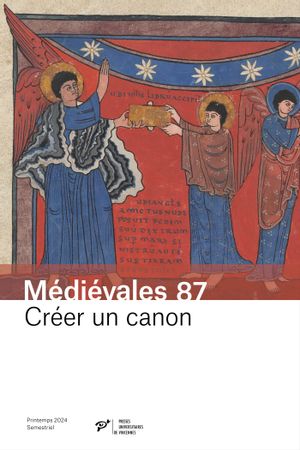Danièle SANSY
Making the Difference : The Imposition of the “Rouelle” in the 13th and 14th Centuries
From 1269 on, the Jews in the kingdom of France were obliged to wear a distinctive sign, a badge imposed by the Church in the West since 1215. The round form of the rota or roella adopted by the king of France, and its color, at first yellow then two-toned – yellow and red – denotes the ignominious character of the sign, which accentuated the will to enforce the physical segregation of the Jews in Christian lands in the 13th and 14th centuries.
Jews – France – distinctive sign – “rouelle” – anti-Judaism
Elsa MARMURSZTEJN
From the Exemplary Narrative to the Academic Casus : A theological Variation on the Theme of the Profanation of the Host (1290)
In 1290, the year of the famed “miracle of the Billettes”, the motif of the profanation of the host by the Jews, a theme in favor because of rising eucharistic devotion and popular belief supported by exemplary narratives, appeared in a quodlibet by the theologian Henry of Ghent. This text helps establish connections between common beliefs and scholastic thought, as well as gain insght into the originality of the intellectual treatment of the theme of the profanation of the host and the pretentions of universities to confine the Jews within the normative frame which was being elaborated for Christian society.
Eucharist – profanation – Jews – Quodlibet – Henry of Ghent
Benoît GREVIN
The Hebrew of the Franciscans : New Insights into the Hebrew Language in the Christian Environment in the 13th Century
In the course of the 13th century, in a particular Christian milieu, that of the Franciscans, attempts were made to acquire a more genuine knowledge of biblical Hebrew. An examination of mainly unpublished documents show that, beyond the great difficulties due to the structural linguistic differences between the Hebrew language and the languages of the Western scholarly tradition, the study of Hebrew by certain clericals was much more serious than is usually acknowledged, having led to exegetic and linguistic analyses which bring to light, in a very novel manner, elements of both the Western grammatical tradition and Jewish exegesis.
Hebrew – grammar – Franciscans – Bacon – Rashi
Dominique IOGNA-PRAT
Disputing the Holy Land
Between the 4th and the 13th centuries, a slow but unrelenting process of spatial exclusion of the Jews took place in the medieval West. Eternally, sent back to their henceforth lost fatherland, the Jews of exile were denied all possibility of anchorage, excluded not only from their former land, which was now the land of Christ and thus the land of a sanctity no longer theirs, but from all the regions of the Earth where the apostles had been sent to preach and where holy Christian landmarks had multiplied. These included chruches, cemeteries, and even communities of inhabitants of particular kingdoms qualified as “Christian”, or indeed “very Christian”, such as France and England, where the sovereigns were concerned with purifying the space of the common homeland bu fightinh heretics and infidels.
Cemetery – church – sacred space – Christian kingdoms – Holy Land
Franck COLLARD
The Emperor and the Poison : From Rumor to Myth. On the Alleged Poisoning of Henry VII in 1313
Attributed with near certainty to disease by modern historiography, the death of the Germanic emperor Henry Vii on August 24, 1313, which occurred in the vicinity of Siena while he was leading a military campaign designed to restore imperial power in Northern Italy, roused great emotion at the time and kindled a lively controversy which lasted for many years to come. This article proposes to evaluate the importance of the poisoning thesis and comprehend its implications by an exploration of the available narrative, literary, and administrative sources. It intends to demonstrate that the invocation of poisoning, more than just anecdotal or fanciful, was in fact motivated by political and ideological factors aiming at the same time to disqualify the antichivalous adversaries of imperial grandeur and to elevate the figure of Henry VII to the eminence of that of another conqueror destroyed by poison : Alexander the Great.
Poison – Henry VII – Guelphs – Ghibellines – historiography – Dominicans
Daisy DELOGU
Armes, amours, écriture. Figures of the Author in Jean Froissart’s Méliador
Jean Froissart’s Arthurian verse romance, Méliador, generally seen as anomalous among the works of Froissart, has long been relegated to the sidelines of Froissart studies. the present article seeks to demonstrate that, despite its singular subjectmatter, Méliador, is in fact closely related to the larger body of Froissart’s works, including his Chroniques and his Dits, and that this integration is achieved precisely by means of the lyrics insertions of Wenceslas de Brabant. The article focuses on the circumstances and manner of the lyrics insertions, with particular emphasis on the function of the squires in the literary production of their masters, the role of the narrator, and the ways in which both squires and narrator function as doubles for Froissart himself. Like many of Froissart’s other works, Méliador exhibits a preoccupation with posterity, the role of memory and its relationship to writing, and the process of literary composition as a subject of the text itself.
Jean Froissart – Méliador – lyric insertions – Wenceslas de Brabant




